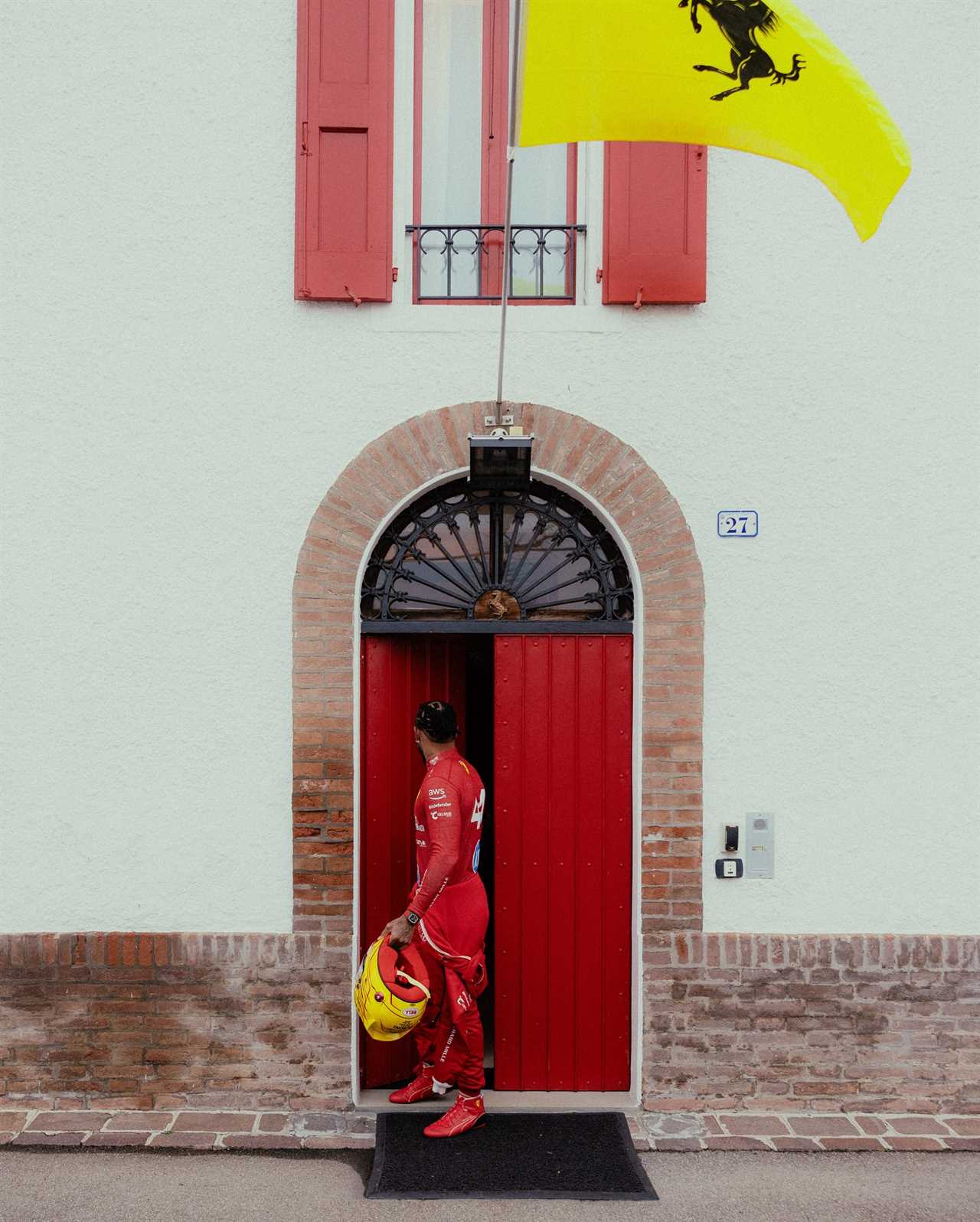
New Addition to Global Real Estate Portfolio
Lewis Hamilton, the renowned Formula 1 champion, has added another prestigious address to his international property collection. The racing star has acquired a stunning residence in Milan, Italy, further diversifying his real estate assets across the globe. This latest purchase complements his existing homes in Monaco, London, Geneva, New York, and Colorado.
Prime Location Near Ferrari’s Heartland
The new Milan property is strategically situated close to Maranello, home of the legendary Ferrari. Located in the exclusive Porta Nuova district, the area is undergoing significant urban development, making it one of Milan’s most sought-after neighborhoods. Property prices here are notably higher, reflecting the area's upscale status and appeal.
Monaco: The Racing Champion’s Main Residence
Monaco serves as Hamilton’s principal residence, where he owns a spacious 2,000 square foot apartment in the prestigious Fontvieille district. This location offers stunning views and luxurious amenities, providing a serene retreat amidst his hectic racing schedule.
Historic London Mansion
In 2017, Hamilton purchased a magnificent mansion in Kensington, London, for £18.2 million. This elegant home, built in the 1830s by renowned architect Samuel Johns, showcases timeless architecture and sophisticated interiors. The Kensington residence underscores Hamilton’s taste for historic and architecturally significant properties.

Notable Properties in New York and Colorado
Hamilton’s New York real estate ventures include a three-floor penthouse in Tribeca, initially acquired for £34 million in 2017 and later sold for £38.3 million in 2021. Additionally, he purchased another Manhattan property for £32 million in 2019, solidifying his presence in one of the world’s most dynamic cities.
Beyond the bustling cityscapes, Hamilton owns a ranch in Aspen, Colorado. Despite his demanding career, he cherishes the Colorado mountains as his main home, valuing the personal memories and affection he holds for the area.
Luxurious Geneva and an Impressive Car Collection
In Geneva, Switzerland, Hamilton possesses a stylish three-bedroom property, adding to his already impressive collection of homes. His real estate investments reflect a blend of luxury, location, and personal significance.
Beyond real estate, Hamilton boasts a remarkable car collection valued at £13 million. Among his automotive interests is a plan to design his own Ferrari road car, potentially inspired by the iconic F40 model, further highlighting his passion for high-performance vehicles.

Personal Life and Achievements
With a busy racing schedule, Hamilton seldom finds time to reside in his various homes. Nevertheless, he regards the Aspen ranch as his primary home due to the deep personal connections and fond memories associated with it. Currently, Hamilton is single and focused on his racing career, without any children.
Hamilton’s financial success is evident as he ranks ninth on the Rich List’s 40 under 40, boasting a net worth of £350 million. His extensive property portfolio and valuable car collection are testaments to his achievements both on and off the track.
Looking Ahead
Lewis Hamilton continues to make significant strides in his illustrious career and personal investments. With his latest Milan property, he reinforces his status as a global figure with discerning taste and a knack for securing prime real estate in some of the world’s most desirable locations.
Frequently Asked Questions
How do F1 teams simulate car performance in advance of races?
F1 teams rely on a variety of simulation tools in order to accurately predict the performance of their cars before they hit the track. Computational Fluid Dynamics for aerodynamic analysis is one of the tools used. Others include chassis and suspension modeling and full-scale test in a wind tunnel. Additionally, teams employ driver-in-the-loop simulators, which allow drivers to experience virtual circuits and provide feedback on car handling. These simulations are used to help teams prepare for races by optimizing setups and strategy.
What technological advances has been made in Formula 1 tire technology?
Formula 1 tire technologies have evolved dramatically, with advances focusing on construction, performance, and compounds. Manufacturers develop various tire compounds to suit different track conditions, temperatures, and strategies. Tires have been improved in construction to increase strength, durability and lateral grip. Additionally, developments in tread patterns and contact surfaces aim to optimize performance across the race distance, balancing grip against wear and degradation.
What is the significance of hybrid technology in Formula 1 engines?
Energy Recovery System is a hybrid technology that has been used in Formula 1 to improve engine performance. ERS can store energy that would otherwise be lost due to braking or heat dissipation. It allows drivers additional power from both a Heat Energy Recovery System (HERS) and Kinetic Energy Recovery System (KERS). This can be used to assist in overtaking maneuvers as well as defending track positions.
What innovations have increased fuel efficiency in Formula 1 engine?
Fuel efficiency in Formula 1 engine has improved thanks to several key improvements. Turbocharging enables smaller displacement engines produce more power while using less fuel. Direct fuel injection provides precise fuel delivery for better combustion efficiency. Energy Recovery System captures and reuses wasted energy to reduce fuel consumption. These and other advancements contribute to the efficiency and sustainability of modern F1 power units.
Can you elaborate on the braking systems used in Formula 1 cars?
The braking systems in Formula 1 cars are highly advanced, consisting of carbon fiber brake discs and pads, coupled with sophisticated hydraulic systems for optimal stopping power. These components are able to withstand high temperatures while providing responsive braking. Brake-bywire systems in the rear provide fine-tuned electronic controls of brake force distribution. They help stabilize the car when decelerating and assist with the regeneration of energy.
Statistics
- In 2021, Formula 1 announced its plan to have a net-zero carbon footprint by 2030, which includes the cars, on-track activities, and the rest of the operations.
- Formula 1 tires lose weight during a race due to wear and degradation, with up to 0.5 kg shed from each tire.
- Formula 1 races on average have over 300 sensors on a car, generating more than 1.5 billion data points over a race weekend.
- Formula 1 engines can rev up to 15,000 RPM, a decrease from the 18,000 RPM limit set prior to the 2014 regulation changes.
- Since the hybrid power units were introduced in 2014, thermal efficiency has increased from around 29% to surpass 50%, a remarkable figure compared to standard road car engines.
- The energy recovery system (ERS) in modern Formula 1 cars can provide up to 161 horsepower of additional power for approximately 33 seconds per lap.
- A typical Formula 1 car's brake discs can reach temperatures of over 1,000 degrees Celsius during heavy braking.
- Modern Formula 1 car chassis are required to withstand a frontal crash test with a peak deceleration of no more than 25 g.
External Links
How To
How to Track F1 Cars Development Throughout a Season
To track Formula 1 car development throughout a season, monitor updates teams bring to each race and how they impact performance. Follow technical analysis from reputable F1 websites and publications for insights into new components. Comparing race results with qualifying results will help you evaluate the effectiveness of new updates. Pay attention to team practice sessions and how they test out their latest upgrades. Participate in pre- and/or post-race interviews, where drivers and engineers often discuss car development.
 CricketBoxingFormula 1GolfHorse RacingPremier LeagueTennisPrivacy PolicyTerms And Conditions
CricketBoxingFormula 1GolfHorse RacingPremier LeagueTennisPrivacy PolicyTerms And Conditions
